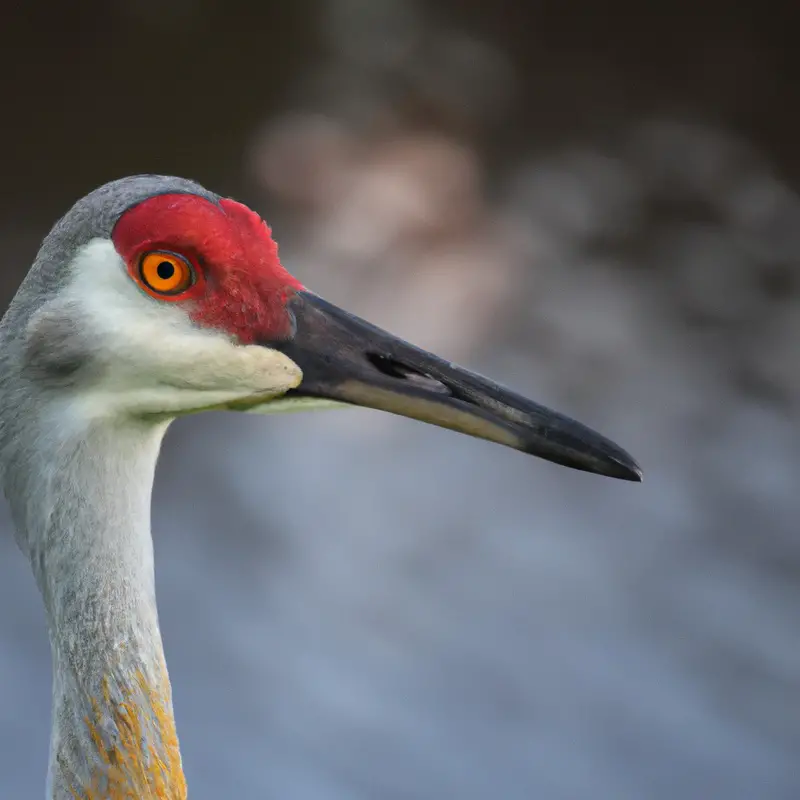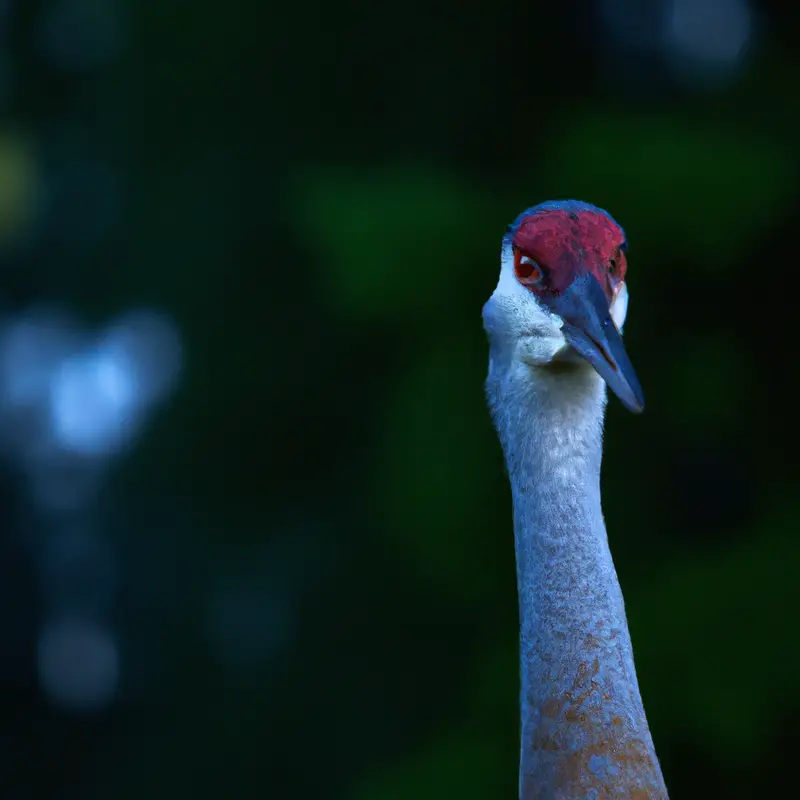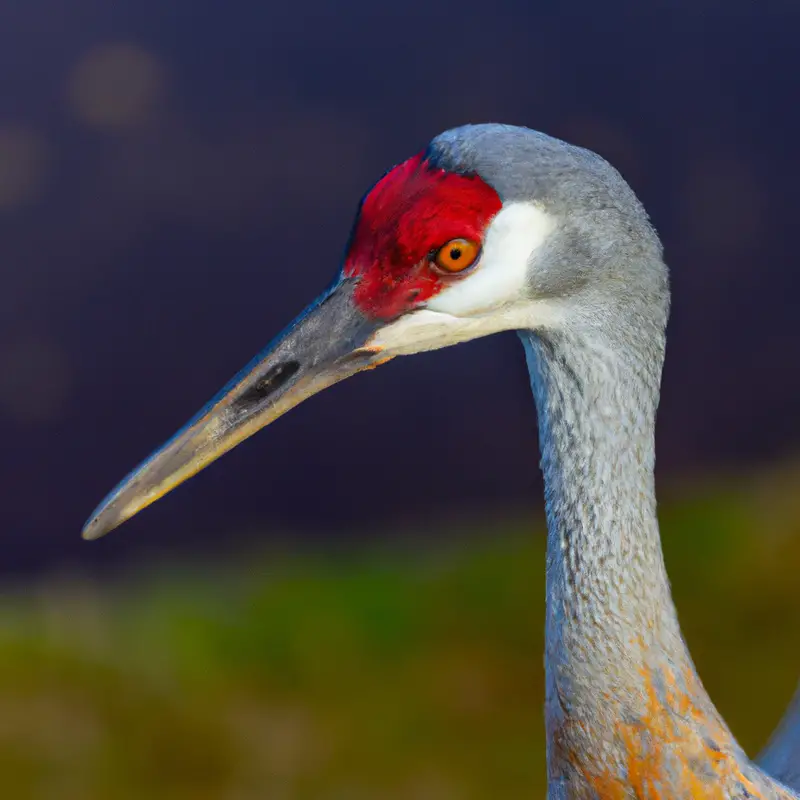Key Takeaways:
- Hunting Sandhill cranes is legal in Arizona.
- Appropriate permits and licenses are required to participate in Sandhill crane hunting.
- Hunting season for Sandhill cranes in Arizona is limited.
- Hunters must follow specific regulations and guidelines when participating in Sandhill crane hunting.
Imagine the sight of majestic Sandhill cranes filling the Arizona sky, their distinctive calls echoing through the air. It’s a thrilling experience that every passionate hunter should add to their bucket list.
Hi there, fellow hunting enthusiasts! Today, I want to dive deep into the world of Sandhill crane hunting in Arizona.
As an avid hunter myself, I’ve had the privilege of pursuing these magnificent birds, and let me tell you, it’s an adventure like no other. From understanding their unique characteristics and behaviors to learning about hunting regulations and techniques, I’ll guide you every step of the way.
So, grab your gear and get ready to embark on an unforgettable Sandhill crane hunting journey in the beautiful state of Arizona!
Topic | Hunting Sandhill crane in Arizona |
Location | Arizona |
Hunting Season | October – January |
Permit Required | Yes |
Bag Limit | 3 per day |
Hunting Methods | Shotgun, Bow and Arrow |
Tagging and Reporting | Required |
Hunter Education | Required |
Understanding Sandhill Cranes
What are Sandhill Cranes?
Sandhill Cranes are large birds that belong to the crane family. They are known for their unique and distinctive appearance, with long legs and necks, and grayish-brown feathers.
These cranes are native to North America and can be found in various habitats, including wetlands, grasslands, and agricultural fields.
Sandhill Cranes are highly migratory birds, often traveling long distances during seasonal movements. They are omnivorous and feed on a variety of foods, including insects, small vertebrates, seeds, and plants.
These magnificent birds are known for their elaborate courtship displays and loud, distinctive calls.
Characteristics of Sandhill Cranes
Sandhill cranes are majestic birds found in various parts of North America, including Arizona.
Here are some key characteristics of these beautiful birds:
- Size: Sandhill cranes can grow up to 4 feet tall, with a wingspan of around 6 to 7 feet. They are one of the largest bird species in North America.
- Feather Color: These cranes have grayish-brown feathers, which appear lighter on their heads and necks. They also have a patch of red skin on their foreheads.
- Mating Dance: Sandhill cranes are known for their elaborate courtship rituals. They perform dances that involve jumping, wing flapping, and various calls to attract a mate.
- Call: Their distinctive “rattle call” is a unique and recognizable sound. It is often described as a loud, rolling bugle-like noise.
- Diet: Sandhill cranes primarily feed on plant material, including grains, grasses, and even insects. They use their long beaks to forage for food in wetlands and open fields.
- Migration: These birds are migratory, meaning they travel long distances between breeding and wintering grounds. They form large flocks and fly in V formations during migration.
- Lifespan: Sandhill cranes can live for up to 20 years or more in the wild, although some individuals have been known to live longer.
Understanding the characteristics of sandhill cranes can enhance your appreciation for these fascinating creatures when observing them in their natural habitat.

Habitat and Migration Patterns of Sandhill Cranes
Sandhill cranes are found in a variety of habitats, ranging from wetlands to grasslands. They prefer areas with shallow water, tall grasses, and abundant food sources.
During the breeding season, they choose remote marshes and wetlands for nesting.
When it comes to migration, these cranes are known for their impressive journeys. They travel thousands of miles, flying in V-shaped formations to conserve energy.
In the fall, they migrate south to warmer regions to escape harsh winters.
In the spring, they return to their breeding grounds to raise their young. Sandhill cranes have fascinating habitat and migration patterns that make them a remarkable species to study and appreciate.
Hunting Regulations and Seasons
Hunting Licenses and Permits
When it comes to hunting licenses and permits, it’s important to follow the regulations set by your state or country. Before you go hunting, make sure you have the proper licenses and permits to avoid any legal issues.
Some common types of licenses and permits include a hunting license, a specific game tag or permit for the species you want to hunt, and sometimes additional tags for special hunts or lands.
To obtain these licenses and permits, you often need to complete a hunter education course and pay the required fees. Remember to always carry your licenses and permits while hunting and be aware of any restrictions or bag limits for the specific species you’re targeting.
Overall, following the rules and regulations for hunting licenses and permits ensures a safe and legal hunting experience.

Hunting Seasons and Bag Limits
Hunting Seasons and Bag Limits are important aspects to consider when planning your hunting trips.
It’s essential to follow the regulations set by the authorities to ensure the conservation and sustainability of wildlife populations.
In Arizona, the hunting season for Sandhill cranes generally runs from late September to early November.
However, specific dates may vary, so it’s crucial to check the current hunting regulations provided by the Arizona Game and Fish Department.
When it comes to bag limits, hunters are typically allowed to harvest one Sandhill crane per season.
Remember to always abide by the rules to protect the species and promote responsible hunting practices.

Firearms and Ammunition Restrictions
Firearms and ammunition restrictions are important to ensure safety and proper hunting practices.
- Arizona law requires hunters to use only non-toxic shot for waterfowl hunting.
- Fully automatic firearms and silencers are prohibited for hunting.
- Hunters are prohibited from using explosive or chemical devices to attract or take wildlife.
- Possession of firearms is restricted in certain areas like national parks and wildlife refuges.
- It is crucial to review and understand these restrictions before heading out for a hunt to ensure compliance with the law and promote responsible hunting practices.
Hunting Techniques and Tips
Choosing the Right Gear for Sandhill Crane Hunting
When it comes to hunting Sandhill cranes, choosing the right gear is key. Here are some tips for selecting the right equipment:
- Shotgun: Opt for a 12-gauge shotgun with a 3-inch chamber. This will provide enough power and range to take down a crane effectively.
- Ammunition: Use steel shot shells in sizes 2 or 3 for Sandhill crane hunting. These will provide the necessary penetration and energy to bring down the bird.
- Camouflage: Investing in quality camouflage gear is essential. Cranes have sharp eyesight and can spot any movement. Choose a pattern that matches the hunting environment and stay hidden.
- Decoys: Use crane decoys to attract the birds. Realistic decoys that simulate the appearance and movements of Sandhill cranes are most effective.
- Calls: Learn how to use Sandhill crane calls to mimic their sounds and attract them to your hunting area. There are a variety of calls available, such as mouth calls and electronic calls.
- Binoculars: A good pair of binoculars will help you scout the area and spot cranes in the distance. Look for models with high magnification and good light transmission.
- Other essentials: Don’t forget items like a comfortable hunting blind, water bottle, snacks, appropriate clothing, and a hunting license.
By selecting the right gear for Sandhill crane hunting, you’ll be well-prepared for a successful and enjoyable hunting experience. Remember to adhere to local hunting regulations and practice ethical hunting practices.
Decoying and Calling Techniques
Decoying and Calling Techniques for hunting Sandhill cranes in Arizona. When it comes to decoying, set up motion decoys such as flapping wings or spinning decoys to add realism to your spread.
Place them strategically to create a natural-looking flock.
For calling, use a variety of vocalizations, including Sandhill crane calls, to attract the birds. Practice mimicking their unique sounds beforehand.
Experiment with different calling sequences to see what works best.
Remember, Sandhill cranes have excellent hearing, so keep your calling realistic and adjust as needed.
Scouting and Finding Hunting Locations
Scouting and finding hunting locations is essential for successful hunts. Here are some tips to help you find the perfect spot:
- Research: Use online resources, maps, and local hunting forums to gather information about potential hunting areas.
- Talk to locals: Engage with local hunters, landowners, and wildlife agencies to gain insights into the best hunting locations.
- Observe: Scout areas for signs of wildlife, such as droppings, tracks, and feeding areas. These signs can indicate a potential hunting spot.
- Explore different terrains: Sandhill cranes prefer open fields and wetland areas, so look for these habitats when scouting.
- Permission and regulations: Ensure you have permission to hunt on the land and understand the hunting regulations specific to the area.
Remember, scouting is an ongoing process. Continuously monitor wildlife patterns and adapt your hunting locations accordingly.
Happy hunting!
Sandhill Crane Hunting FAQs
Can Non-Residents Hunt Sandhill Cranes in Arizona?
Non-residents are allowed to hunt Sandhill cranes in Arizona. However, they must obtain the appropriate hunting license and follow all state regulations.
It’s important for non-residents to familiarize themselves with the specific hunting seasons, bag limits, and any other requirements set by the Arizona Game and Fish Department.
Additionally, non-residents may need to apply for a permit or enter a drawing to participate in the Sandhill crane hunt. Make sure to check the latest information from the Arizona Game and Fish Department to ensure compliance with all rules and regulations.
Is There a Limit on the Number of Sandhill Cranes a Hunter Can Take?
Yes, there is a limit on the number of Sandhill Cranes a hunter can take. The specific limit may vary depending on the location and hunting regulations of the particular area.
It is important to familiarize yourself with the regulations and obtain the necessary permits before hunting.
The limit is in place to ensure the conservation of Sandhill Crane populations and maintain a sustainable hunting practice. Always check with local authorities or consult the hunting regulations for the precise limit in your area.
Are There Any Specific Hunting Strategies for Sandhill Cranes in Arizona?
When hunting Sandhill cranes in Arizona, there are a few strategies that can increase your chances of success.
Here are some specific techniques you can consider:
- scouting: Spend time observing crane migration patterns and identify their preferred feeding and roosting areas.
- Concealment: Use blinds to hide yourself and your hunting equipment, ensuring you blend in with the surroundings.
- Decoy placement: Set up decoys strategically to attract cranes to the hunting area.
- Calling: Practice mimicking crane calls to lure them closer.
- Shot placement: Aim for vital areas such as the head and neck for a clean and humane kill.
Remember to always follow local regulations and guidelines to hunt responsibly and ethically.
Final Verdict
Hunting Sandhill cranes in Arizona is a thrilling and rewarding experience for avid hunters. These majestic birds provide an exciting challenge, requiring proper gear, decoying techniques, and scouting skills to ensure a successful hunt.
By adhering to the hunting regulations and seasons set forth by the state, hunters can enjoy the opportunity to harvest Sandhill cranes responsibly.
With their unique characteristics, diverse habitats, and migratory patterns, Arizona offers a prime location for this pursuit. So grab your hunting gear and embark on a memorable Sandhill crane hunting adventure in Arizona.
You won’t be disappointed.









